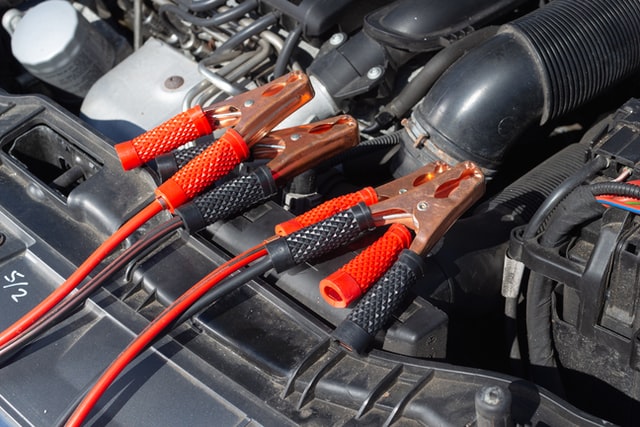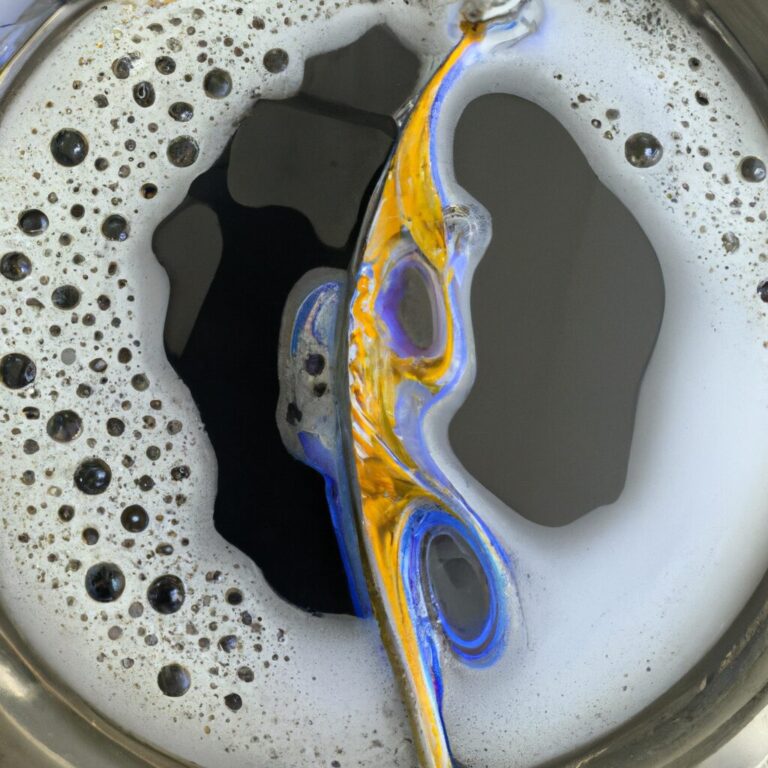How to Connect Battery Cables Together
To connect battery cables together, match the positive and negative terminals and secure them tightly. It’s important to ensure a strong connection for proper functioning.
Are you wondering how to connect battery cables together for your vehicle or electronic device? Establishing a secure connection between the positive and negative terminals is crucial for optimal performance. By following the correct procedure, you can prevent any mishaps or damage to the batteries.
In this guide, we will walk you through the steps needed to safely and effectively connect battery cables together. Whether you are a novice or experienced in working with batteries, this information will help you accomplish the task with ease. By the end of this article, you will feel confident in your ability to connect battery cables together like a pro.
Benefits Of Connecting Battery Cables
When it comes to the function and longevity of your vehicle’s battery, connecting the battery cables properly is crucial. The benefits of connecting battery cables go beyond just maintaining a reliable electrical system in your car. By ensuring a secure connection, you can improve battery performance and ensure proper electrical connections.
Improves Battery Performance
Properly connecting battery cables helps optimize the performance of the battery. When the cables are not securely connected, the battery may not receive the full charge, leading to reduced efficiency and a shorter lifespan. A secure connection ensures optimal power transfer from the battery to the electrical components of the vehicle, allowing for better performance and longevity of the battery.
Ensures Proper Electrical Connections
By securely connecting the battery cables, you can ensure the proper flow of electricity throughout the vehicle’s electrical system. A secure connection reduces the risk of electrical malfunction or short circuits that can occur when the cables are loosely attached. This is essential for the overall safety and functionality of the vehicle, as it prevents potential electrical issues that could disrupt the operation of critical systems.
Tools And Materials Needed
Battery Cables
Ensure to use heavy-duty battery cables for a secure connection.
Wrench Or Pliers
Wrench or pliers will help tighten the cable connections effectively.
Battery Terminal Cleaner
Battery terminal cleaner aids in removing corrosion for better conductivity.
Protective Gloves
Protective gloves shield your hands during the connection process.
Safety Goggles
Wear safety goggles to protect your eyes from any potential hazards.
Step-by-step Guide
To safely and correctly connect battery cables together, follow these simple steps:
Step 1: Park The Vehicles
Ensure both vehicles are parked close enough for the cables to reach each battery but not touching.
Step 2: Turn Off Engines And Safety Precautions
Turn off both vehicles’ engines and ensure both vehicles are in neutral with the parking brakes engaged.
Step 3: Locate Battery Terminals
Locate the positive and negative terminals on each battery; they are typically marked with a plus (+) or minus (-) sign.
Step 4: Inspect Terminals And Cables
Check the terminals and cables for any signs of damage, corrosion, or debris that may hinder a good connection.
Step 5: Clean The Terminals
Using a wire brush, clean the battery terminals to ensure a strong connection.
Step 6: Connect Positive Cables
Connect the positive (+) cable to the positive terminal on the dead battery first, then to the positive terminal on the working battery.
Step 7: Connect Negative Cables
Connect the negative (-) cable to the negative terminal on the working battery, then to a metal part of the dead car’s engine (not the battery).
Step 8: Secure The Connections
Ensure all connections are tight and secure to prevent them from coming loose during the jump-start process.
Step 9: Start The Engines
Start the engine of the working vehicle and let it run for a few minutes to charge the dead battery.
Step 10: Disconnect The Cables
When the dead vehicle starts, disconnect the cables in reverse order, starting with the negative cable from the metal part of the engine.

Credit: www.wikihow.com
Tips For Proper Connection
When connecting battery cables together, it is crucial to ensure a proper and secure connection to maintain the electrical flow and prevent potential hazards. Here are some essential tips for proper connection to follow when dealing with battery cables.
Check Battery Compatibility
Before connecting battery cables, it is important to verify that the batteries are compatible. Different batteries may have various voltage and amperage ratings, and connecting incompatible batteries can result in damage to the electrical systems.
Avoid Crossing Or Touching The Cable Ends
When connecting battery cables, it’s imperative to avoid crossing or touching the cable ends. This can lead to a short circuit, which can be hazardous and may cause damage to the batteries and electrical components.
Tighten The Connections Properly
Ensure that the battery cable connections are tightened properly to establish a secure electrical connection. Loose connections can result in voltage drops and poor electrical conductivity, affecting the performance of the battery and connected devices.
Common Mistakes To Avoid
When it comes to connecting battery cables together, it’s important to be aware of the common mistakes that can occur. By avoiding these pitfalls, you can ensure a successful connection and protect both yourself and your vehicle.
Connecting The Cables In The Wrong Order
One common mistake is connecting the cables in the wrong order. It’s crucial to follow the correct sequence to prevent any damage or electrical accidents. The correct order to connect the battery cables is as follows:
- Attach the positive cable (usually colored red) to the positive terminal of the donor battery or power source.
- Connect the other end of the positive cable to the positive terminal of the dead battery.
- Next, attach the negative cable (usually colored black) to the negative terminal of the donor battery.
- Finally, connect the other end of the negative cable to a metal, unpainted part of the engine block or chassis on the vehicle with the dead battery.
Overlooking Safety Precautions
Another mistake that people often make when connecting battery cables is overlooking safety precautions. It’s important to prioritize your safety and take the necessary steps to avoid accidents or injuries. Here are some safety precautions to keep in mind:
- Wear protective gloves and safety goggles to protect yourself from any potential electric shocks or chemical spills.
- Ensure that the ignition is turned off and all electrical accessories are switched off before connecting the cables.
- Avoid smoking, sparks, or open flames near the battery, as it may cause a hazardous situation.
Neglecting Proper Terminal Cleaning
Neglecting proper terminal cleaning is another mistake that can lead to poor connections and battery problems in the long run. Over time, battery terminals can become corroded and hinder the flow of electricity. To avoid this, consider the following cleaning steps:
- Start by removing the cables from the battery terminals, beginning with the negative cable.
- Use a wire brush or battery terminal cleaner to remove any corrosion or buildup on the terminals.
- Wipe the terminals clean with a cloth or rag.
- Apply a small amount of petroleum jelly or anti-corrosion spray on the clean terminals to prevent future corrosion.
By following these guidelines and avoiding common mistakes, you can ensure a successful and safe connection when dealing with battery cables. Remember to prioritize safety, follow the correct order, and maintain clean terminals for optimal performance. Give your vehicle the power it needs without any unnecessary complications!

Credit: www.wikihow.com

Credit: www.mrmuffler.com
Frequently Asked Questions Of How To Connect Battery Cables Together
Which Battery Terminal Do You Connect First?
Connect the positive battery terminal first to avoid a short circuit.
How Do You Connect Battery Cables?
To connect battery cables, start by ensuring the vehicle is turned off. Connect the positive (red) cable to the positive terminal, then the negative (black) cable to the negative terminal. Tighten securely and start the vehicle to ensure a successful connection.
How Do You Splice Battery Cables Together?
To splice battery cables, strip insulation, twist wires together, solder the connection, cover with heat shrink tube, and seal for waterproofing.
What Does Tying Battery Cables Together Do?
Tying battery cables together can jump-start a discharged battery by allowing power to flow between them.
How Do I Connect Battery Cables Together?
To connect battery cables together, start by identifying the positive and negative terminals. Then, attach the positive cable to the positive terminal and the negative cable to the negative terminal. Use a wrench to tighten the connections securely.
What Tools Do I Need To Connect Battery Cables?
To connect battery cables, you will need a wrench and some corrosion remover. The wrench is used to loosen and tighten the terminals, while the corrosion remover helps clean any buildup on the terminals for a better connection.
Can I Connect Battery Cables Without Using A Wrench?
No, it is essential to use a wrench when connecting battery cables. The wrench allows you to securely tighten the connections, ensuring a proper and safe connection between the battery and the cables.
Conclusion
Connecting battery cables may seem daunting at first, but with the right tools and knowledge, it can be accomplished safely and efficiently. By following the steps outlined in this guide, you can ensure a successful connection and prolong the life of your battery.
Always prioritize safety and consult a professional if you encounter any difficulties. Properly connecting battery cables is crucial in maintaining your vehicle’s function and performance.


